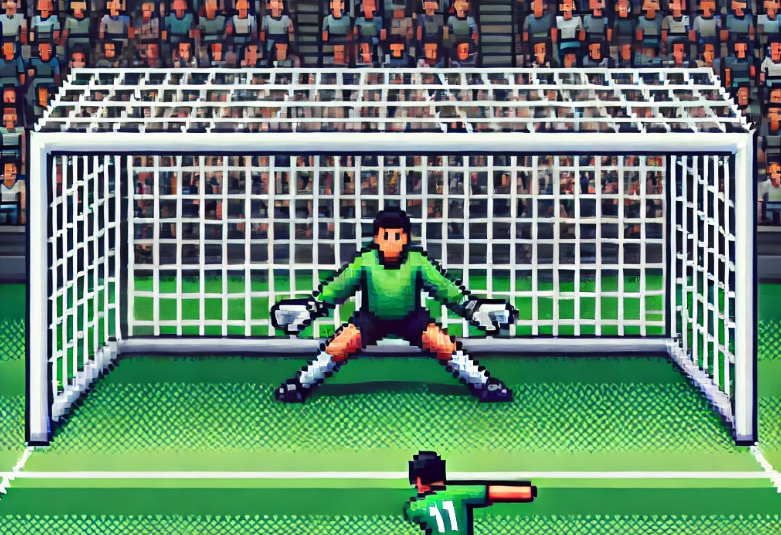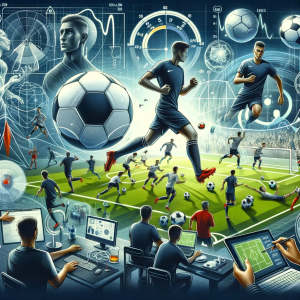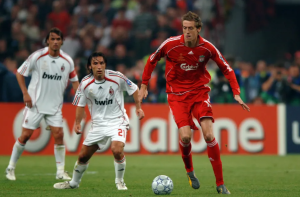
Influence Kicker Direction in Soccer Penalty Kicks
Every soccer match, the crowd holds its breath when a penalty kick is about to take place. It’s a dramatic moment where the fate of the game can change in an instant. But what if I told you that a small trick could influence the outcome without anyone even realizing it?
New research suggests that the placement of the goalkeeper, even when it’s only slightly off-center, can significantly sway where a penalty-taker aims. And here’s the catch—it happens at a level so subtle that the shooter isn’t even consciously aware of it.
The Subtle Power of Positioning
Soccer is as much a mental game as it is physical. The pressure of scoring a goal, especially during a penalty kick, is immense. For years, researchers have studied how small, almost invisible cues can affect decision-making in these high-stakes moments. One particularly intriguing concept is the off-center effect. This refers to how the goalkeeper’s position—even if just a few centimeters off the center of the goal—can alter where the penalty-taker directs the ball.
Imagine you’re stepping up to take a penalty. You see the goalkeeper standing squarely in the middle of the goal—or so you think. But what if the keeper was actually standing just a little to the left? Chances are, without realizing it, you’d aim for the larger right side. This happens because our brains process spatial information in ways we aren’t always aware of. The goalkeeper’s subtle misplacement creates the illusion of one side of the goal being larger than the other, nudging players to kick toward that side.
Physical and Mental Fatigue: Do They Affect Decision-Making?
In a recent study, researchers wanted to explore how both physical and mental fatigue impact decision-making during these moments. We know that fatigue affects athletic performance, but how does it impact cognitive processes, like choosing which side of the goal to aim for in a penalty kick?
To test this, researchers divided participants into three groups: one group underwent physical exercise (cycling), another performed a mentally exhausting task (a focus-based attention test), and the third group did neither. After their respective activities, participants were shown images of a goalkeeper standing in various positions—either perfectly centered or slightly off to the left or right. Their task was simple: kick to the side they felt was more open, or if they noticed the goalkeeper was off-center, skip the kick.
What the Study Found
The findings were fascinating. The off-center effect was consistently observed across all groups, meaning that players tended to aim for the side they perceived as larger, even when the goalkeeper was only slightly off-center. However, there were some surprising differences between the groups.
Participants who had undergone cognitive exercise (the attention test) showed a noticeable bias: they more frequently chose to kick to the right side of the goal, even when the goalkeeper was only slightly off-center to the left. This bias toward the right goal side is similar to a known phenomenon called spatial pseudoneglect, where people unconsciously favor one side when processing visual information. Mental fatigue seemed to impair their ability to process spatial information accurately, leading them to choose the “wrong” side more often.
On the other hand, participants who had undergone physical exercise (cycling) did not exhibit this same right-side bias. Their decision-making was more balanced, suggesting that while physical fatigue may impair athletic performance, it doesn’t affect cognitive processes in the same way mental fatigue does.
Real-World Implications for Soccer Coaching
These findings have some important implications for soccer coaches, players, and even club management. First, they reinforce the idea that penalty-taking isn’t just about technique; it’s about mental sharpness. A player’s ability to process visual and spatial information can be compromised by fatigue, particularly mental fatigue. This means that it’s essential to consider both the physical and cognitive demands placed on players during training and matches.
This research suggests the value of incorporating cognitive training into regular practice routines for coaches. Exercises that challenge players’ attention, focus, and decision-making abilities—particularly under conditions of fatigue—could give them a critical edge when it matters most. Simulating match conditions, where players must make rapid decisions under pressure, could help them become more resilient to the effects of fatigue.
Penalty Kicks: More Than Just Guesswork
Penalty kicks are often seen as a guessing game—will the player shoot left, or will they shoot right? But this research shows that there’s more going on beneath the surface. Players aren’t just guessing; they’re being subtly influenced by the goalkeeper’s positioning, and this effect is even more pronounced when mental fatigue comes into play.
Understanding this psychological bias offers goalkeepers a unique advantage. By slightly shifting their position—just a few centimeters off-center—they can increase the likelihood that a penalty-taker will aim for the side they want to defend. It’s a mind game as much as it is a physical one, and savvy goalkeepers can use this to their advantage, subtly steering the penalty-taker’s decision without them even knowing it.
Applications
So, how can coaches, players, and even club managers put this research to use?
1. Cognitive Training for Players
Incorporating cognitive exercises that simulate mental fatigue can help players sharpen their decision-making skills under pressure. This could involve drills that require rapid decision-making or tasks that test attention and focus, especially when players are tired.
2. Penalty-Kick Practice
Coaches can use this insight to design penalty-kick training sessions where goalkeepers practice standing just slightly off-center. This could help players become more aware of subtle cues and improve their ability to resist the off-center effect in real matches.
3. Strategic Use of Fatigue
Understanding the effects of mental and physical fatigue can help coaches better time their substitutions and manage player fatigue during a game. By recognizing when a player is mentally drained, they can make tactical changes to maintain peak decision-making on the field.
Conclusion
The next time you watch a penalty shootout, remember that there’s more at play than just raw skill. Subtle shifts in positioning and the unseen effects of fatigue are shaping decisions in ways that neither the player nor the audience can see. This research sheds light on the hidden science behind penalty kicks and offers actionable strategies for players, coaches, and goalkeepers alike to gain the upper hand in these pivotal moments.
Are you ready to delve deeper into the science and strategy of soccer?
This Week in Soccer offers you a unique blend of expert analysis, engaging infographics, and practical insights. Subscribe to our newsletter and stay ahead of the game with the latest in soccer analytics and coaching strategies. Make the move from spectator to strategist. Subscribe now!


